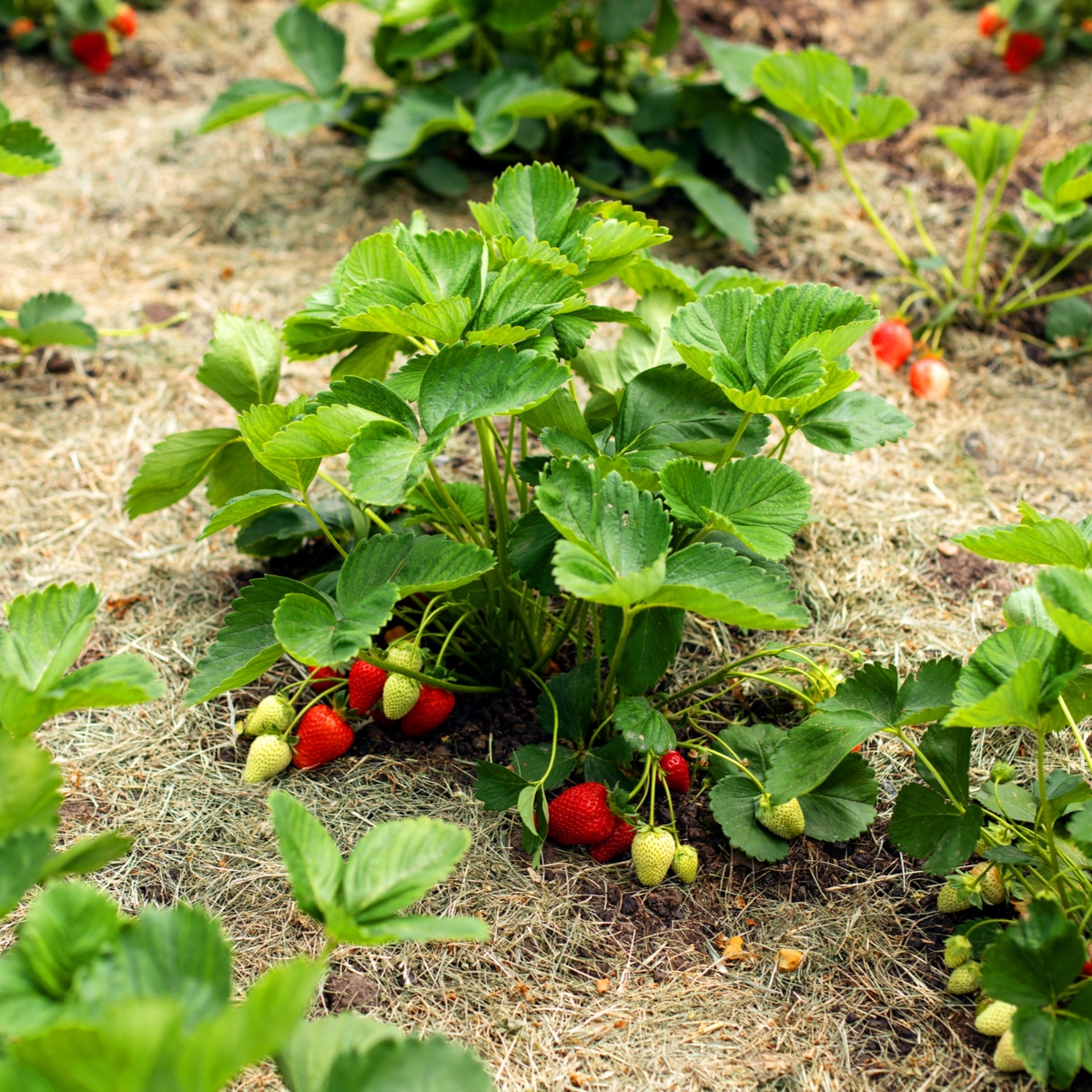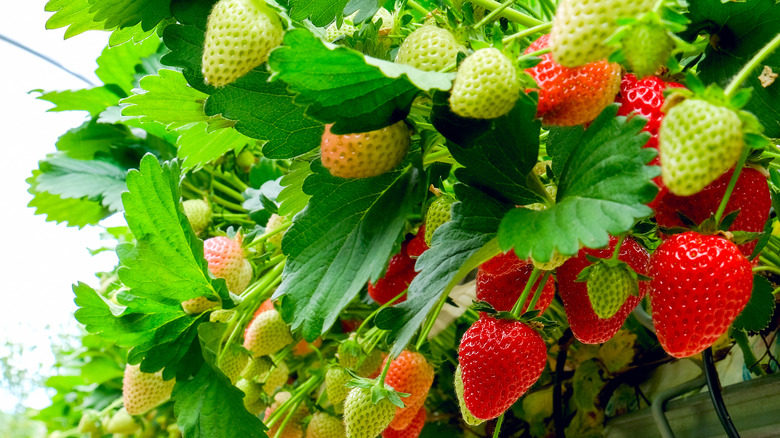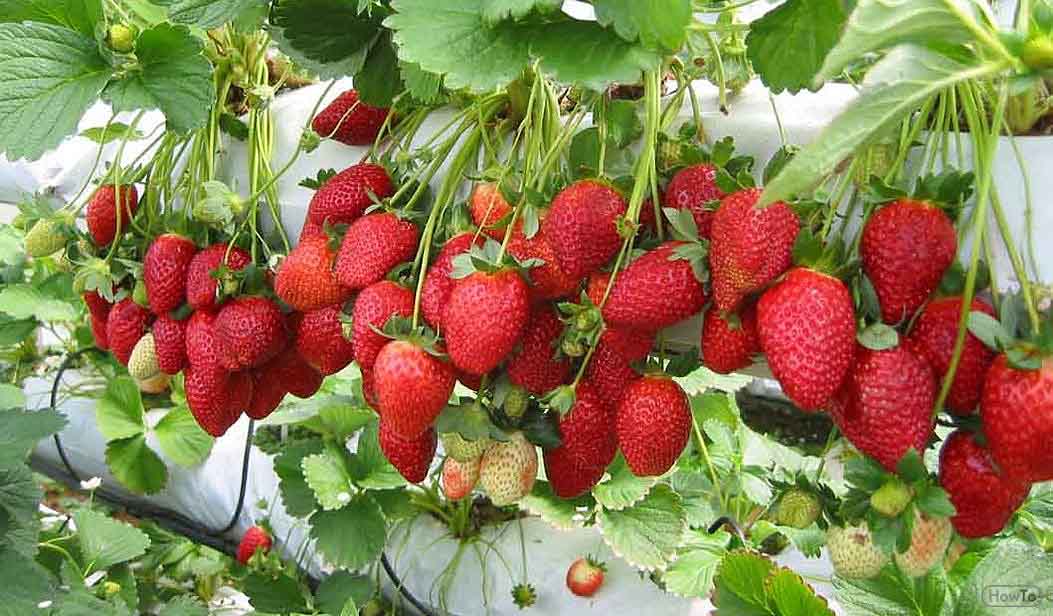Getting Started with Strawberry Plant Care
When it comes to growing delicious strawberries, understanding the basics of strawberry plant care is essential. To ensure a bountiful harvest, it’s crucial to choose a healthy plant, select the right container, and comprehend the plant’s specific needs. By following these simple steps, you’ll be well on your way to becoming a strawberry-growing pro.
First, select a strawberry plant that is free from pests and diseases. Look for plants with bright green leaves and sturdy stems. Next, choose a container that is at least 6-8 inches deep and has good drainage holes. Strawberry plants prefer well-draining soil, so avoid using containers that can waterlog the soil.
Strawberry plants require full sun to produce a high yield, so choose a location that receives at least 6 hours of direct sunlight per day. They also prefer cooler temperatures, between 60-70°F (15-21°C), to thrive. By understanding these basic requirements, you’ll be able to provide your strawberry plant with the optimal conditions for growth.
Learning how to care for strawberry plants is a straightforward process that requires attention to detail and a willingness to provide the right conditions. By following these simple steps, you’ll be enjoying fresh, juicy strawberries in no time. Whether you’re a seasoned gardener or a beginner, growing strawberries can be a rewarding experience that provides a delicious harvest for months to come.
When learning how to care for strawberry plants, it’s essential to remember that every plant is unique and may have specific needs. By understanding these needs and providing the right conditions, you’ll be able to grow healthy and productive strawberry plants that will provide you with a bountiful harvest.
Soil, Sun, and Water: The Holy Trinity of Strawberry Plant Care
When it comes to growing healthy and productive strawberry plants, understanding the importance of soil, sun, and water is crucial. These three elements are the foundation of strawberry plant care, and neglecting any one of them can have serious consequences for your plants.
Soil is the most critical component of strawberry plant care. Strawberry plants prefer well-draining, rich soil with a pH between 5.5 and 6.5. To achieve this, mix in a 2-inch layer of compost or well-rotted manure into the soil before planting. This will provide your strawberry plants with the necessary nutrients for healthy growth.
Sunlight is also essential for strawberry plant care. Strawberry plants require at least 6 hours of direct sunlight per day to produce a high yield. If possible, choose a location that receives full sun to partial shade. However, be careful not to expose your strawberry plants to extreme temperatures, as this can cause damage to the leaves and fruit.
Water is the final component of the holy trinity of strawberry plant care. Strawberry plants require consistent moisture, especially when they’re producing fruit. However, overwatering can be detrimental to your plants, causing root rot and other problems. To avoid this, water your strawberry plants deeply once or twice a week, depending on weather conditions.
Learning how to care for strawberry plants requires attention to these three critical elements. By providing your strawberry plants with the right soil, sunlight, and water, you’ll be well on your way to growing healthy and productive plants that will provide you with a bountiful harvest.
When it comes to watering your strawberry plants, it’s essential to avoid overwatering. Check the soil regularly to ensure it’s not too wet or dry. If the soil feels dry to the touch, it’s time to water. However, if the soil is already moist, wait a few days before watering again.
Fertilizing for Maximum Yield
Fertilizing is an essential part of strawberry plant care, as it provides the necessary nutrients for healthy growth and fruit production. When it comes to fertilizing strawberry plants, it’s essential to choose the right type of fertilizer and apply it at the right time.
There are several types of fertilizers that can be used for strawberry plants, including balanced fertilizers, high-phosphorus fertilizers, and organic fertilizers. Balanced fertilizers, such as 10-10-10, provide equal amounts of nitrogen, phosphorus, and potassium, making them a good all-purpose choice. High-phosphorus fertilizers, such as 10-20-10, promote fruiting and flowering, while organic fertilizers, such as compost or manure, provide a slow release of nutrients.
When to fertilize strawberry plants depends on the stage of growth. In the spring, apply a balanced fertilizer to promote healthy growth and development. In the summer, switch to a high-phosphorus fertilizer to promote fruiting and flowering. In the fall, apply a balanced fertilizer again to prepare the plants for the next growing season.
It’s also essential to avoid overfertilizing, as this can cause more harm than good. Overfertilizing can lead to an overabundance of nutrients, which can cause the plants to become leggy and weak. To avoid overfertilizing, start with a small amount of fertilizer and gradually increase as needed.
Learning how to care for strawberry plants, including fertilizing, is crucial for maximizing yields and promoting healthy growth. By choosing the right type of fertilizer and applying it at the right time, you’ll be able to provide your strawberry plants with the necessary nutrients for optimal growth and production.
In addition to fertilizing, it’s also essential to provide your strawberry plants with other essential nutrients, such as potassium and magnesium. These nutrients can be provided through the use of additional fertilizers or by incorporating them into the soil through composting or mulching.
Pruning and Training for Optimal Growth
Pruning and training are essential components of strawberry plant care, as they promote healthy growth, encourage fruiting, and maximize yields. By pruning and training your strawberry plants, you can create a robust and productive plant that will provide you with a bountiful harvest.
Pruning involves removing dead or diseased leaves, stems, and flowers to promote air circulation and prevent the spread of disease. To prune your strawberry plants, use a pair of clean and sharp pruning shears to remove any dead or damaged tissue. Make clean cuts just above a node, and avoid tearing the plant’s tissue.
Training involves providing support for the plant’s growth, such as using cages, trellises, or stakes to promote upright growth. This helps to maximize yields by allowing the plant to grow more efficiently and make the most of available space. To train your strawberry plants, use a combination of pruning and support to encourage the plant to grow in a desired direction.
There are several techniques for pruning and training strawberry plants, including the “mound” method and the “hill” method. The mound method involves creating a mound of soil around the base of the plant, and then pruning the plant to encourage it to grow in a circular pattern. The hill method involves creating a hill of soil around the base of the plant, and then pruning the plant to encourage it to grow in a linear pattern.
By pruning and training your strawberry plants, you can promote healthy growth, encourage fruiting, and maximize yields. This is an essential part of learning how to care for strawberry plants, and is crucial for achieving optimal results.
In addition to pruning and training, it’s also essential to provide your strawberry plants with regular maintenance, such as watering, fertilizing, and mulching. By combining these techniques, you can create a robust and productive plant that will provide you with a bountiful harvest.
Pest and Disease Management: Common Issues and Solutions
Pest and disease management is a crucial aspect of strawberry plant care, as it can significantly impact the health and productivity of the plant. By understanding the common pests and diseases that affect strawberry plants, you can take proactive steps to prevent and treat these issues, ensuring a healthy and bountiful harvest.
Aphids are one of the most common pests that affect strawberry plants. These small, soft-bodied insects feed on the plant’s sap, causing curled or distorted leaves. To control aphids, use neem oil or insecticidal soap, and make sure to spray the undersides of the leaves where aphids tend to congregate.
Slugs are another common pest that can cause significant damage to strawberry plants. These slimy creatures feed on the plant’s leaves and fruit, causing holes and tears. To control slugs, use copper tape or crushed eggshells around the base of the plant, and hand-pick any slugs you find at night.
Powdery mildew is a common disease that affects strawberry plants, causing a white, powdery coating on the leaves. To control powdery mildew, use a fungicide specifically designed for strawberry plants, and make sure to remove any infected leaves or stems.
Botrytis is another common disease that affects strawberry plants, causing a grayish-brown mold to form on the fruit. To control botrytis, use a fungicide specifically designed for strawberry plants, and make sure to remove any infected fruit or stems.
Learning how to care for strawberry plants, including pest and disease management, is essential for achieving optimal results. By understanding the common pests and diseases that affect strawberry plants, you can take proactive steps to prevent and treat these issues, ensuring a healthy and bountiful harvest.
In addition to using chemical controls, there are also several organic and integrated pest management methods that can be used to manage pests and diseases on strawberry plants. These include using beneficial insects, such as ladybugs and lacewings, and practicing good sanitation and hygiene.
Mulching and Composting: Retaining Moisture and Suppressing Weeds
Mulching and composting are two essential techniques for strawberry plant care, as they help retain moisture, suppress weeds, and regulate soil temperature. By incorporating these techniques into your strawberry plant care routine, you can create a healthy and productive growing environment that promotes optimal growth and fruit production.
Mulching involves applying a layer of organic material, such as straw or wood chips, around the base of the strawberry plants. This helps retain moisture in the soil, suppress weeds, and regulate soil temperature. To mulch your strawberry plants, apply a 2-3 inch layer of organic material around the base of the plants, keeping it a few inches away from the crown.
Composting involves breaking down organic materials, such as food scraps and yard waste, into a nutrient-rich soil amendment. This helps provide essential nutrients to the strawberry plants, promoting healthy growth and fruit production. To compost for your strawberry plants, create a compost pile using a mix of “green” materials (such as food scraps and grass clippings) and “brown” materials (such as dried leaves and straw).
By incorporating mulching and composting into your strawberry plant care routine, you can create a healthy and productive growing environment that promotes optimal growth and fruit production. This is an essential part of learning how to care for strawberry plants, and is crucial for achieving optimal results.
In addition to mulching and composting, there are also several other techniques that can be used to retain moisture and suppress weeds in strawberry plants. These include using drip irrigation, which delivers water directly to the roots of the plants, and using landscape fabric, which prevents weeds from growing by blocking light and preventing seed germination.
By combining these techniques, you can create a comprehensive strawberry plant care routine that promotes optimal growth and fruit production. This includes providing the right amount of water, nutrients, and support, as well as protecting the plants from pests and diseases.
Supporting Your Strawberry Plants: Cages, Trellises, and More
Providing support for your strawberry plants is an essential part of their care, as it helps promote upright growth and maximize yields. By using cages, trellises, and other structures, you can create a stable and productive growing environment that allows your strawberry plants to thrive.
Cages are a popular choice for supporting strawberry plants, as they provide a sturdy framework for the plants to grow around. To use a cage, simply place it around the base of the plant and tie the stems to the cage using twine or wire. This will help keep the plant upright and promote even growth.
Trellises are another option for supporting strawberry plants, and can be used to create a more vertical growing space. To use a trellis, simply place it near the base of the plant and tie the stems to the trellis using twine or wire. This will help keep the plant upright and promote even growth.
In addition to cages and trellises, there are also several other structures that can be used to support strawberry plants. These include strawberry clips, which are small clips that attach to the stem of the plant and hold it in place, and strawberry ladders, which are small ladders that provide a framework for the plant to grow around.
By providing support for your strawberry plants, you can create a healthy and productive growing environment that promotes optimal growth and fruit production. This is an essential part of learning how to care for strawberry plants, and is crucial for achieving optimal results.
In addition to providing physical support, it’s also important to provide your strawberry plants with the right amount of nutrients and water. By combining these elements, you can create a comprehensive strawberry plant care routine that promotes optimal growth and fruit production.
Harvesting and Enjoying Your Homegrown Strawberries
Harvesting your homegrown strawberries is one of the most rewarding experiences of growing your own strawberry plants. By following a few simple tips, you can enjoy your delicious and nutritious strawberries at the peak of ripeness.
To harvest your strawberries, gently grasp the fruit and twist it slightly to release it from the plant. Avoid pulling or tugging on the fruit, as this can damage the plant and reduce future yields. Harvest your strawberries regularly to encourage the plant to produce more fruit.
Once you’ve harvested your strawberries, it’s essential to handle and store them properly to maintain their freshness and flavor. To do this, gently place the strawberries in a container or basket, and store them in a cool, dry place. Avoid washing the strawberries before storing them, as this can cause them to spoil more quickly.
In addition to enjoying your strawberries fresh, you can also use them in a variety of recipes, such as jams, preserves, and desserts. By incorporating your homegrown strawberries into your cooking and baking, you can enjoy their delicious flavor and nutritional benefits all year round.
Learning how to care for strawberry plants, including harvesting and enjoying the fruit, is an essential part of growing your own strawberries. By following these simple tips, you can enjoy a bountiful harvest of delicious and nutritious strawberries, and experience the many rewards of growing your own food.
By combining the tips and techniques outlined in this article, you can create a comprehensive strawberry plant care routine that promotes optimal growth and fruit production. This includes providing the right amount of water, nutrients, and support, as well as protecting the plants from pests and diseases.




:max_bytes(150000):strip_icc()/GettyImages-1135357175-399ec2ba5cae4a3a87aa7c077d145d7b.jpg)


